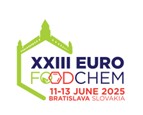Scientific journal
Journal of Food and Nutrition Research
Summary No. 4 / 2022
Bulut, S. – Dimić, G. – Smole Možina, S. – Čargo, M. – Rakić, I. – Živančev, J. – Antić, I. – Kocić-Tanackov, S.
Occurrence of moulds and ochratoxin A in dried fruits and vegetables from the Serbian market
Journal of Food and Nutrition Research, 61, 2022, No. 4, s. 330-338
Sunčica Kocić-Tanackov, Department of Food Preservation Engineering, Faculty of Technology Novi Sad, University of Novi Sad, Bulevar cara Lazara 1, 21000 Novi Sad, Serbia. E-mail: suncicat@uns.ac.rs
Received 30 March 2022; 1st revised 17 August 2022; accepted 26 August 2022; published online 4 October 2022.
Summary: Various dried fruits and vegetables (raspberries, cherries, grapes, blueberries, apricots, cranberries, figs, plums, pears, apples, tomatoes, mixed vegetables), with and without surface disinfection, were analysed for the presence of moulds and ochratoxin A. Dried figs were the only ones in which moulds were not detected. In other samples, contamination by moulds was reduced after surface disinfection, while internalized contamination remained. Species observed in dried fruits were from the genera Aspergillus, Cladosporium, Emericella, Eupenicillium, Eurotium, Monilia, Mucor, Penicillium, Rhizopus, Talaromyces, Trichoderma and Xeromyces, and in vegetables were Aspergillus, Penicillium and Rhizopus. Among the dominant genera and species in dried fruits were Penicillium, which represented 24.5 % of all isolates, Aspergillus (22.3 %) and Rhizopus (19.2 %), with P. glabrum, A. niger and Rh. oryzae as the most common species. The dominant genera and species in dried vegetables were Penicillium (6.4 %) and Rhizopus (5.3 %), with P. glabrum, Rh. microspores and Rh. oligosporus, as the most common species. Potential ochratoxin A producers found in this study were A. niger and P. verrucosum. However, the results of immunochemical analysis by ELISA indicated that the content of ochratoxin A in all samples was lower than 0.1 μg·kg-1.
Keywords: mould; ochratoxin A; contamination; dried fruits; dried vegetables
Download:
(pdf, 313.35 Kb, 615x)










